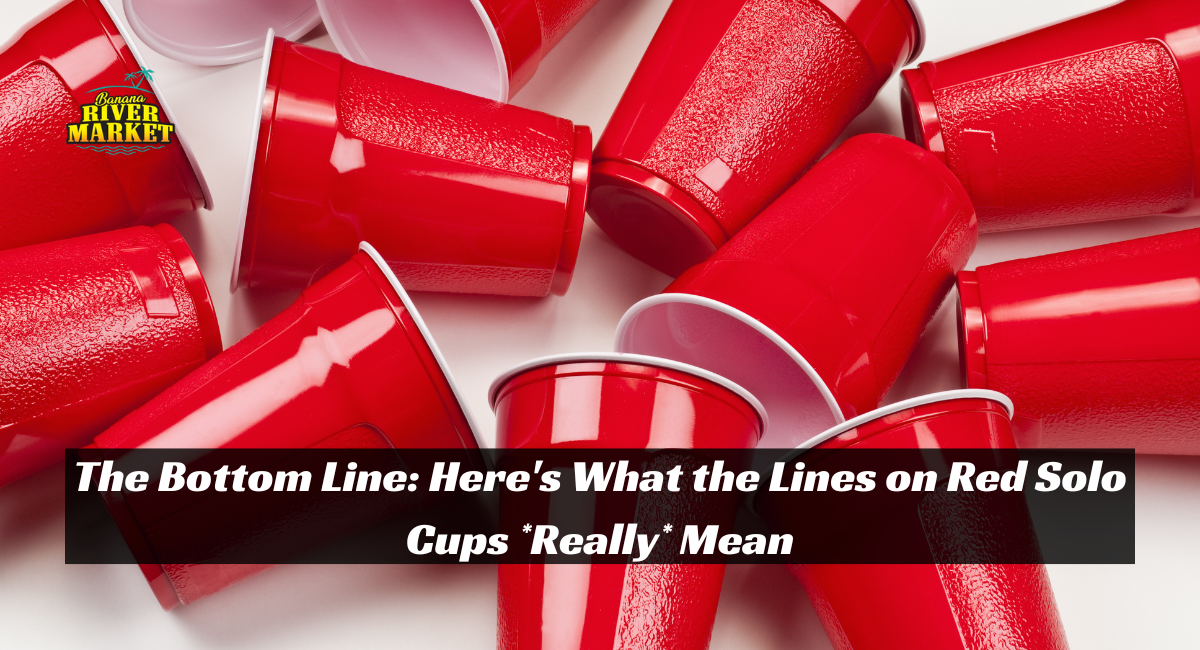Red Solo cups have become familiar at American parties, backyard barbecues, and casual gatherings. Since their introduction in the 1970s, these durable, disposable cups have become a staple of fun events. While they’re often associated with drinking games and socializing, there’s been a long-standing debate about the lines that appeared on the original cups. What do they mean?
A Brief History of the Red Solo Cup
The Solo Cup Company, initially known for producing paper cups, changed the party scene forever with the release of its red plastic cup in the 1970s.
It quickly became famous thanks to its sturdiness, affordable price, and convenient size. Over time, it wasn’t just the practicality of the cup that made it famous—it became an icon, even getting its country song dedicated to it.
However, the lines on the original red Solo cups sparked curiosity and confusion for many years. People began theorizing about what they signified, especially since they appeared to correspond with common drink measurements. These speculations have only added to the cup’s legendary status.
Theories About the Lines on Solo Cups
Plenty of theories have circulated online about the purpose of the lines on the red Solo cup. The most well-known theory suggests that the lines were intended as measurement guides for alcoholic drinks.
According to this popular belief:
- The first line, near the bottom of the cup, represents 1 ounce—the standard amount for a shot of hard liquor.
- The second line, placed a bit higher, marks 5 ounces, which happens to be a typical serving size for wine.
- The third line, situated even higher up, represents 12 ounces, the standard amount for a serving of beer.
While these measurements are approximate, the idea that these lines served as rough guidelines for drink portions took off. In party culture, people began to use the lines as informal measuring tools for mixed drinks, shots, or wine pours.
A New Use: Cooking Measurements
Thanks to social media, another theory about the lines on Solo cups has surfaced recently. Content creator @LORAfied shared a hack on her Instagram that takes the red Solo cup beyond just drinks—she suggested using it as a tool for cooking and baking measurements in a pinch.
Here’s how the measurements supposedly break down:
- Lora says the first line equals about two tablespoons (or one-eighth of a cup).
- The second line represents roughly half a cup.
- The third line comes out to about 1 1/2 cups.
- The top line marks approximately 2 cups.
While these measurements could be more precise, Lora suggested that the cup could be a handy tool for rough estimates when you’re cooking or baking and don’t have a measuring cup on hand.
The Actual Purpose of the Lines
Before you start using your red Solo cup as a go-to kitchen tool or a drink-measuring device, it’s important to note that these lines were never intended to serve as official measurements. Solo cup redesigns have eliminated the lines, so any cups you see today with lines are likely not from the Solo brand.
According to the Solo website, the lines were initially included for functional purposes, like helping secure a grip or preventing cups from sticking together when stacked. However, they weren’t designed to measure liquids or anything else. A dedicated FAQ entry on the Solo Cup site says:
“You seek the answer to one of the greatest mysteries of our time. Launched in the 1970s, our original 18 oz SOLO Cup featured lines that roughly equaled 1, 5, and 12 ounces. These lines mean something different for everyone! For some, it means a responsible pour at their next tailgate.
For others, it means a more secure grip as they operate the grill at the BBQ. And for our little fans, it means they can stack and unstack our cups into a pyramid without them sticking together. Today, our party cup has no lines.”
In short, the lines were for convenience, not as official guidelines for measuring alcohol or ingredients. But because the measurements are close to standard portions, people naturally made the connection and ran with it.
A Redesign with a Focus on Fun
In recent years, Solo has redesigned its iconic cups, removing the lines altogether. Whether it’s the lines, the solid grip, or the square base the newer models now have, one thing remains clear: the red Solo cup will always be synonymous with good times.
For many, these cups evoke memories of summer barbecues, tailgating, and casual get-togethers. Even though the lines are no longer part of the design, that hasn’t stopped people from continuing to speculate about their hidden meanings and use them for both drinking and practical purposes.
Conclusion:
Whether you believe the lines on the original Solo cups were meant to measure alcohol or not, the story behind them has added to the cup’s mystique. Even without lines, red Solo cups continue to be a symbol of carefree fun, durability, and American party culture.
Next time you’re holding a red Solo cup at a gathering, you can impress your friends by sharing the natural history behind those mysterious lines—whether you use them to pour the perfect drink, measure ingredients in a pinch, or enjoy the nostalgia that comes with these beloved party staples.
READ MORE: An Aldi $50 KitchenAid Copycat Sells for More $250.

